Introduction
In the vast tapestry of culinary arts, traditional dishes often hold a special place, not just for their taste but for the memories and stories they evoke. One such dish that encapsulates the essence of simplicity and elegance is Scallion Oil Taro. This dish, though seemingly humble, is a delightful medley of flavors that can transport you to the heart of Asian kitchens, where the art of using fresh, wholesome ingredients is paramount.
Taro, a starchy root vegetable known for its earthy flavor and creamy texture, serves as the foundation of this dish. When paired with the aromatic and slightly pungent scallions, along with the fragrant sesame oil and a hint of soy sauce, the result is a harmonious blend of flavors that dances on your palate.
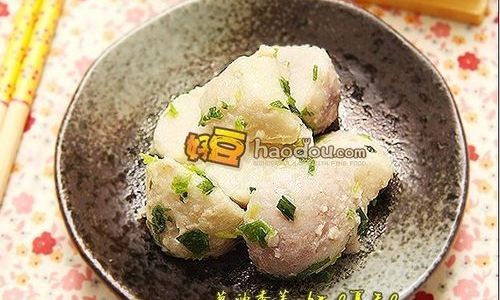
In this comprehensive guide, we will embark on a culinary journey, exploring every step involved in making Scallion Oil Taro. From selecting the perfect ingredients to mastering the cooking techniques, this article promises to be a treasure trove of knowledge for both novice and seasoned chefs alike.
Chapter 1: Understanding the Ingredients
Before diving into the recipe, it’s crucial to understand the role each ingredient plays in creating the final dish.
1 Taro
Taro (Colocasia esculenta) is a tropical plant whose corms (underground stems) are edible. These corms are rich in carbohydrates, dietary fiber, and essential vitamins and minerals. When cooked, taro has a smooth, creamy texture and a subtly sweet, nutty flavor. For Scallion Oil Taro, choose firm, unblemished taro corms with smooth skin. Avoid those with cracks, soft spots, or mold.
2 Scallions
Scallions, also known as green onions, are a staple in Asian cuisine. They add a fresh, slightly pungent flavor and a beautiful green hue to dishes. When making Scallion Oil Taro, use fresh, crisp scallions with vibrant green tops and firm, white stalks.
3 Sesame Oil
Sesame oil is extracted from sesame seeds and is known for its nutty, toasted aroma. It adds a rich, depth of flavor to dishes without overpowering them. For this recipe, use toasted sesame oil, which is darker in color and more fragrant than untoasted sesame oil.
4 Soy Sauce
Soy sauce is a staple condiment in Asian cooking, providing saltiness, umami, and a deep, brown color to dishes. When selecting soy sauce, opt for a high-quality, naturally brewed variety to enhance the overall flavor profile of your Scallion Oil Taro.
5 Garlic
Garlic adds a subtle sweetness and a robust, savory flavor to dishes. When minced or crushed, its sulfur compounds are released, creating an aromatic and flavorful base for the scallion oil.
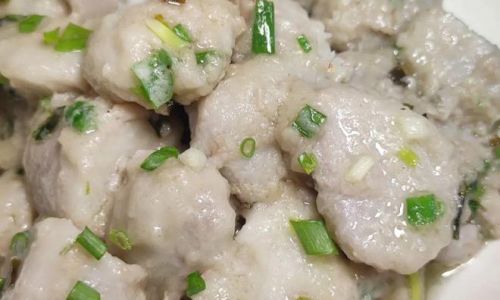
6 Sugar and Salt
A pinch of sugar balances the earthiness of the taro and the pungency of the scallions, while salt enhances the overall flavor profile.
Chapter 2: Preparation and Cooking Techniques
Now that we have a clear understanding of the ingredients, let’s dive into the preparation and cooking techniques.
1 Preparing the Taro
Step 1: Peel the Taro
Wearing gloves is essential when handling taro, as its sap can cause skin irritation. Use a sharp knife to peel the taro, removing all traces of skin and any blemishes.
Step 2: Cut the Taro
Cut the peeled taro into bite-sized pieces. Aim for uniformity in size to ensure even cooking.
Step 3: Blanch the Taro
Bring a pot of salted water to a boil. Blanch the taro pieces for about 5-7 minutes until they are tender but still hold their shape. Drain and set aside. Blanching helps to remove excess starch and sets the stage for the absorption of flavors during the final cooking process.
2 Preparing the Scallion Oil
Step 1: Wash and Chop the Scallions
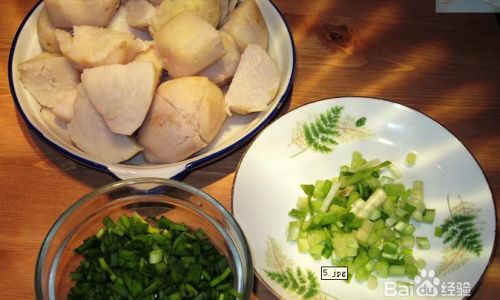
Thoroughly wash the scallions and pat them dry. Separate the white stalks from the green tops. Finely chop the white stalks and slice the green tops into thin strips for garnish.
Step 2: Make the Scallion Oil
In a small saucepan, heat a blend of vegetable oil and sesame oil over medium heat. Add the minced garlic and chopped white stalks of the scallions. Cook gently, stirring occasionally, until the scallions are fragrant and slightly translucent. Be careful not to burn the garlic, as it will turn bitter.
Step 3: Season the Oil
Once the scallions and garlic are fragrant, add a pinch of salt and a small amount of sugar. Stir to combine and let the mixture cook for another minute or two, allowing the flavors to meld together. Remove from heat and set aside to cool slightly.
3 Assembling the Dish
Step 1: Combine Ingredients
In a large mixing bowl, combine the blanched taro pieces with the scallion oil. Gently toss to ensure that each piece of taro is coated evenly with the fragrant oil.
Step 2: Season with Soy Sauce
Drizzle a small amount of soy sauce over the taro and scallion oil mixture. Start with a small amount and taste as you go, adding more if needed. The soy sauce should add a hint of saltiness and umami without overpowering the natural flavors of the taro and scallions.
Step 3: Garnish and Serve
Transfer the Scallion Oil Taro to a serving dish. Garnish with the sliced green tops of the scallions for a pop of color and an additional layer of freshness. Optionally, sprinkle with a pinch of toasted sesame seeds for added texture and flavor.
Chapter 3: Tips and Variations
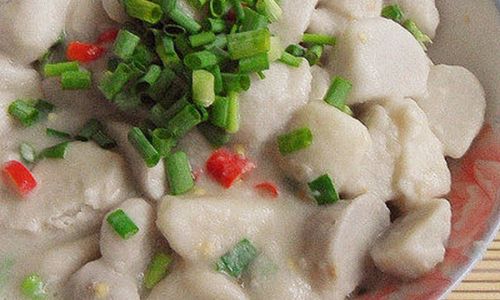
Cooking is an art form that thrives on creativity and experimentation. Here are some tips and variations to elevate your Scallion Oil Taro:
1 Tips for Perfect Results
- Use Fresh Ingredients: The quality of your ingredients will directly impact the final dish. Always use fresh, high-quality taro, scallions, and soy sauce.
- Control the Heat: When making the scallion oil, be mindful of the heat. Cooking too quickly can burn the garlic and scallions, resulting in a bitter flavor.
- Taste and Adjust: Seasoning is key. Taste the dish as you go, adding soy sauce, salt, and sugar as needed to balance the flavors.
2 Variations to Try
- Add a Kick: For those who enjoy a bit of spice, add a pinch of red pepper flakes or a drizzle of chili oil to the scallion oil mixture.
- Incorporate Aromatics: You can enhance the aromatic profile of the dish by adding a few slices of fresh ginger or a star anise when making the scallion oil.
- Serve it Hot or Cold: Scallion Oil Taro can be served warm, straight from the stove, or chilled for a refreshing summer dish.
Chapter 4: The Cultural Significance of Scallion Oil Dishes
Scallion oil dishes, such as Scallion Oil Taro, hold a special place in many Asian cultures. They are often served as a side dish or a light meal, showcasing the art of using simple, fresh ingredients to create complex flavors.
In China, scallion oil dishes are a staple in Sichuan cuisine, where the use of chili oil, garlic, and scallions is prevalent. These ingredients are not just for flavor; they are also believed to have medicinal properties, promoting digestion and enhancing the overall taste experience.
In Taiwan, scallion oil dishes are often served during festivals and special occasions, symbolizing prosperity and abundance. The bright green hue of the scallions is seen as a symbol of hope and vitality.
Conclusion
Scallion Oil Taro is a dish that embodies the essence of simplicity and elegance. With just a few ingredients and a bit of care, you can create a dish that is both visually appealing and bursting with flavor. This journey through the ingredients, preparation, cooking techniques, and cultural significance has hopefully inspired you to give this dish a try in your own kitchen.
Remember, cooking is an art form that thrives on creativity and experimentation. Don’t be afraid to tweak the recipe to suit your taste preferences. Whether you enjoy it warm or cold, as a side dish or a main meal, Scallion Oil Taro is sure to become a staple in your culinary repertoire.
As you savor each bite, let the flavors take you on a journey through the heart of Asian cuisine, where the art of using fresh, wholesome ingredients is not just a practice but a way of life. Happy cooking!

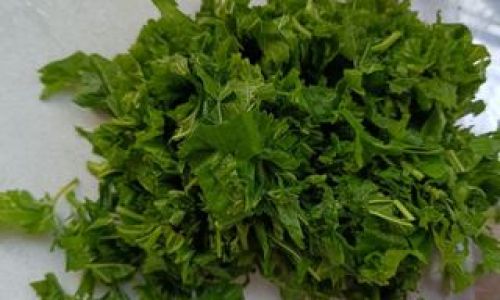

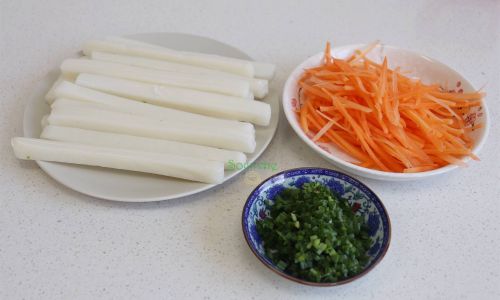
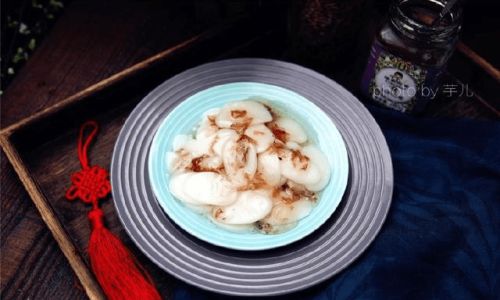
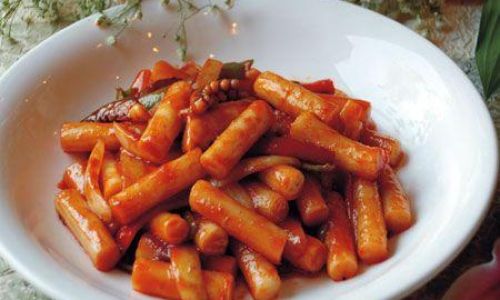
0 comments